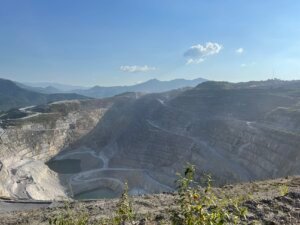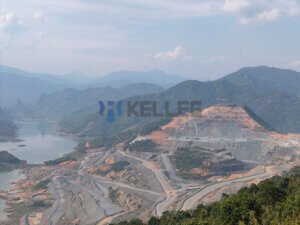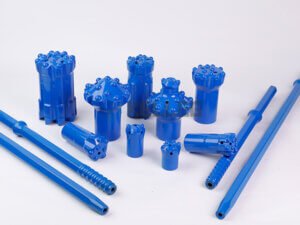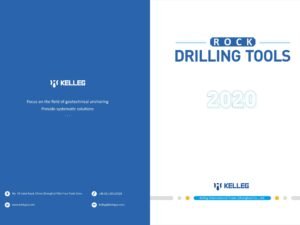Rock is the object of rock drilling operations and the drilling of rock is inseparable from the use of rock drilling tools. Button bit is achieved with the rapid drilling of hydraulic rock drills, saving rock drilling assisting man-hours, and increasing the industrial drilling speed. It has a wide application range, a large amount of consumption, consumption in percussion or impact rotary rock drilling. Therefore, reducing the consumption of button bits is an important way to improve economic benefits.
From the perspective of rock drill bits, there are two main ways to reduce the cost of rock drilling. One is to design and manufacture drill bits with high efficiency and long service life; the other is to use the drill bits effectively and reasonably. The former can be solved by choosing a high-quality drill bit supplier, and the latter requires the staff at the rock drilling site to have full knowledge and understanding of the reasonable use of drill bits.

Choose the appropriate button bit
Choosing the appropriate button bit is the prerequisite for reasonable use. The selection process should be based on factors such as project requirements, rock type, drill bit size, and material. Different types of button bits need to be chosen for various rock types to adapt to distinct rock drilling requirements. At the same time, it is also necessary to select the appropriate size and material of the drill bit according to the project scale and budget to ensure that it can meet the project needs and is economically feasible.
Reduce wear and tear
The main forms of failure of button bit are cracking of drill bit head, bulging pants, and a broken waist; a large number of carbide buttons are broken, fallen off, or broken; the drill bit falls into or gets stuck in the drill hole. There is another common form of failure: when none of the previously mentioned failures occur, the drill bit fails only because of wear, especially when the carbide buttons are so worn that they cannot be drilled, which is called normal failure. According to the on-site investigation of large, medium, and small button bits, the proportion of normal failure is 16% to 67% (the higher the quality of the drill bit, the greater the proportion). Therefore, wear is an important factor in reducing service life of drill bits.
Grinding of button bit
With the continuous improvement of the quality of drill bits, more and more drill bits are scrapped due to wear, which proves that wear significantly reduces service life of drill bits. Not only that, but the wear also significantly reduces the drilling speed.
As the total length of the gouge increases, the head of button gradually blunts and becomes a flat surface. It is not difficult to understand the theoretical principles and significance of grinding. What is difficult is to make on-site management and operators truly realize the economic and social value of grinding. It has long been a habit for button grinding in developed countries abroad. However, the vast majority of mines or quarries in China use the button bit to the end and throw it away when the drill driver feels that the drill bit’s rock drilling speed is too slow, which increases the consumption of button bit, so we should pay attention to the resharpening of button bit to reduce the loss.

Make sure the rock drill has good working conditions
For pneumatic rock drills, it is generally believed that the size of the impact energy is proportional to the high or low air pressure. Not only that, but the low air pressure also makes the powder discharge effect worse. That is, the particles that can be discharged from the drill hole under normal air pressure cannot be discharged when the air pressure is reduced, and thus can be discharged only after the second or even more repeated crushing, which inevitably consumes unnecessary energy and reduces the rock drilling speed, and at the same time increases the wear and tear of drill bits, prompting the early scrapping of drill bits. In addition to affecting the service life of drill bit and rock drilling speed, the air pressure also affects the utilization rate of a drill bit and the labor intensity of workers.
Therefore, for rock drilling operators, when the actual air pressure of the rock drill is significantly lower than the specified working air pressure, it should be stopped for maintenance so that the air pressure can be restored to the normal level before working. For the technical management personnel on site, to ensure that the air pressure supplied to each drilling rig meets the specified requirements, it is necessary to ensure that the air compressor works normally and the air circuit is smooth.
Reasonable operation
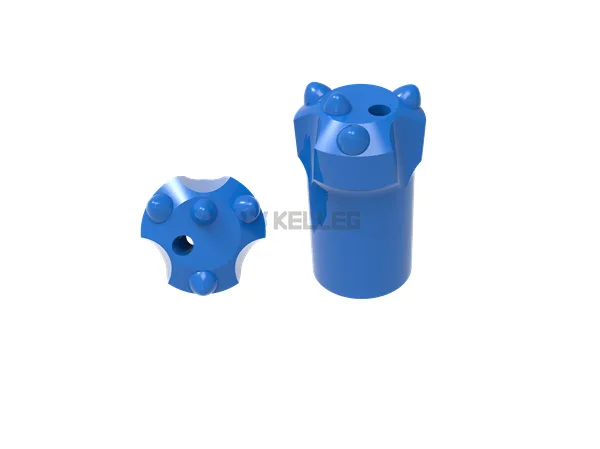
Understanding the basic principle of mechanical rock drilling and the importance of operation to the efficiency and cost of rock drilling are important prerequisites for reasonable operation.
- The main reason for jamming is that the drill only drills for a long time without lifting the drill, especially when it encounters a fissure interlayer, which leads to a dilemma for the drill bit to enter and retreat. The most likely situation for drill sticking is when drilling in aquifers and large fissures. When encountering aquifers, the driver should frequently lift the drill and continuously purge the blast hole to ensure that the powder discharge is unobstructed and the air hole of the drill bit will not be blocked. If the auger is lifted and blown regularly, the drill sticking accident will generally not occur.
- Careless operation will not only cause jamming of the drill but will also speed up the early scrapping of the drill bit. The shaft pressure of some drilling rigs is adjustable, and experienced master workers can generally choose the shaft pressure well. However, some drivers think that the shaft pressure will increase the rock drilling speed change, so they increase the platinum pressure significantly, which is most likely to break the carbide buttons when drilling the harder rocks. The purpose of increasing the shaft pressure is to ensure close contact between the brazing head and the rock and to break the rock mainly by impact and rotation. So simply increasing the shaft pressure does not increase the drilling speed. Therefore, the shaft pressure cannot be increased easily.
Regular inspection and maintenance
Regular inspection and maintenance are essential measures to extend the service life of the button bit. It is necessary to regularly check the degree of wear of the drill bit, whether the buttons are loose or falling off, and whether the drill rod is bent or damaged. Parts that require replacement should be promptly replaced. At the same time, cleaning and maintenance also need to be carried out according to actual conditions to maintain the best performance and condition of the drill bit.
Conclusion
To sum up, many aspects need to be paid attention to when using button bits properly. By rationally using button bits, the safety and efficiency of the project can be improved, its service life can be extended, and maintenance costs can be reduced. At the same time, it is also necessary to strengthen safety awareness and abide by operating procedures to avoid safety accidents caused by improper operation or negligence.


